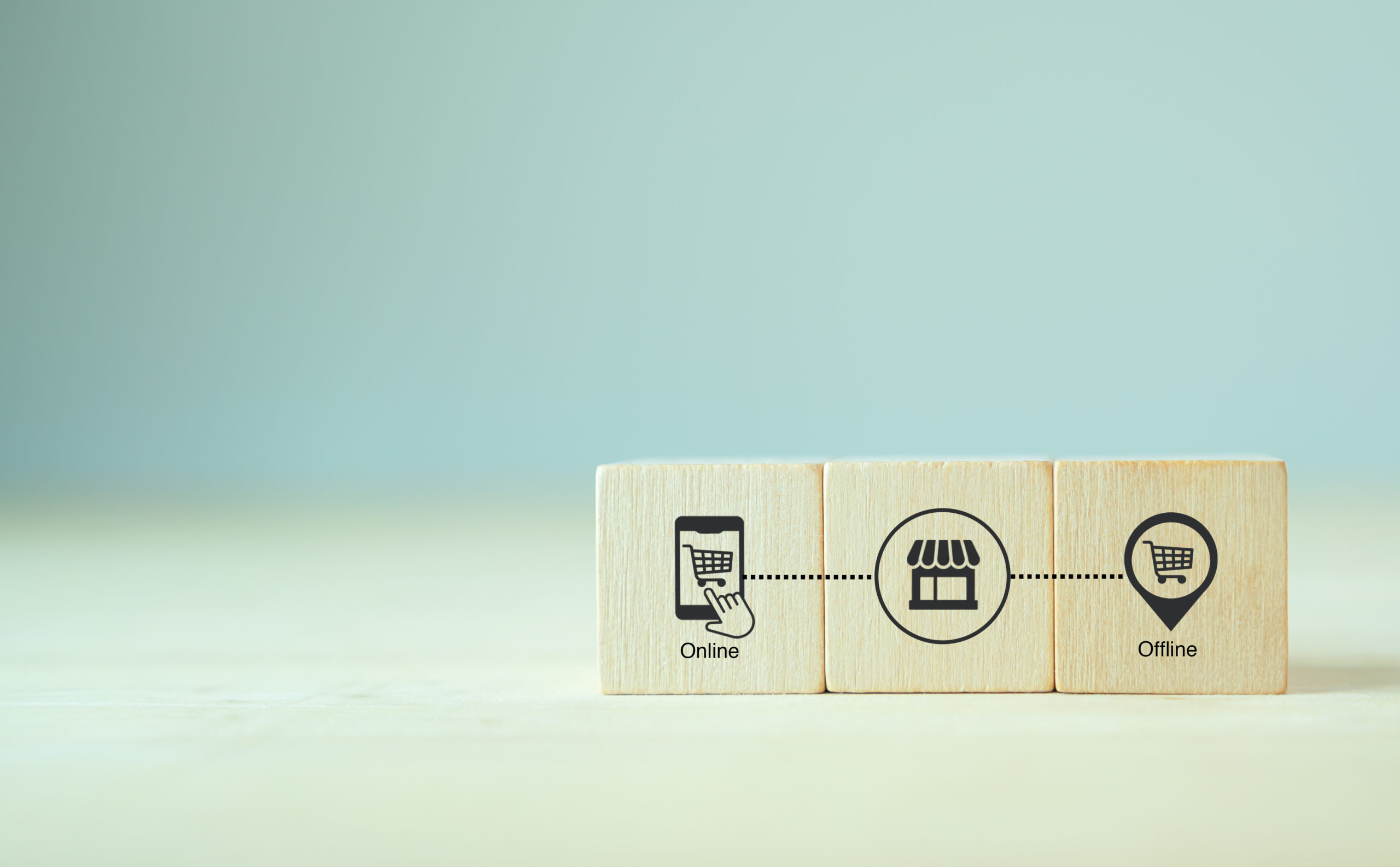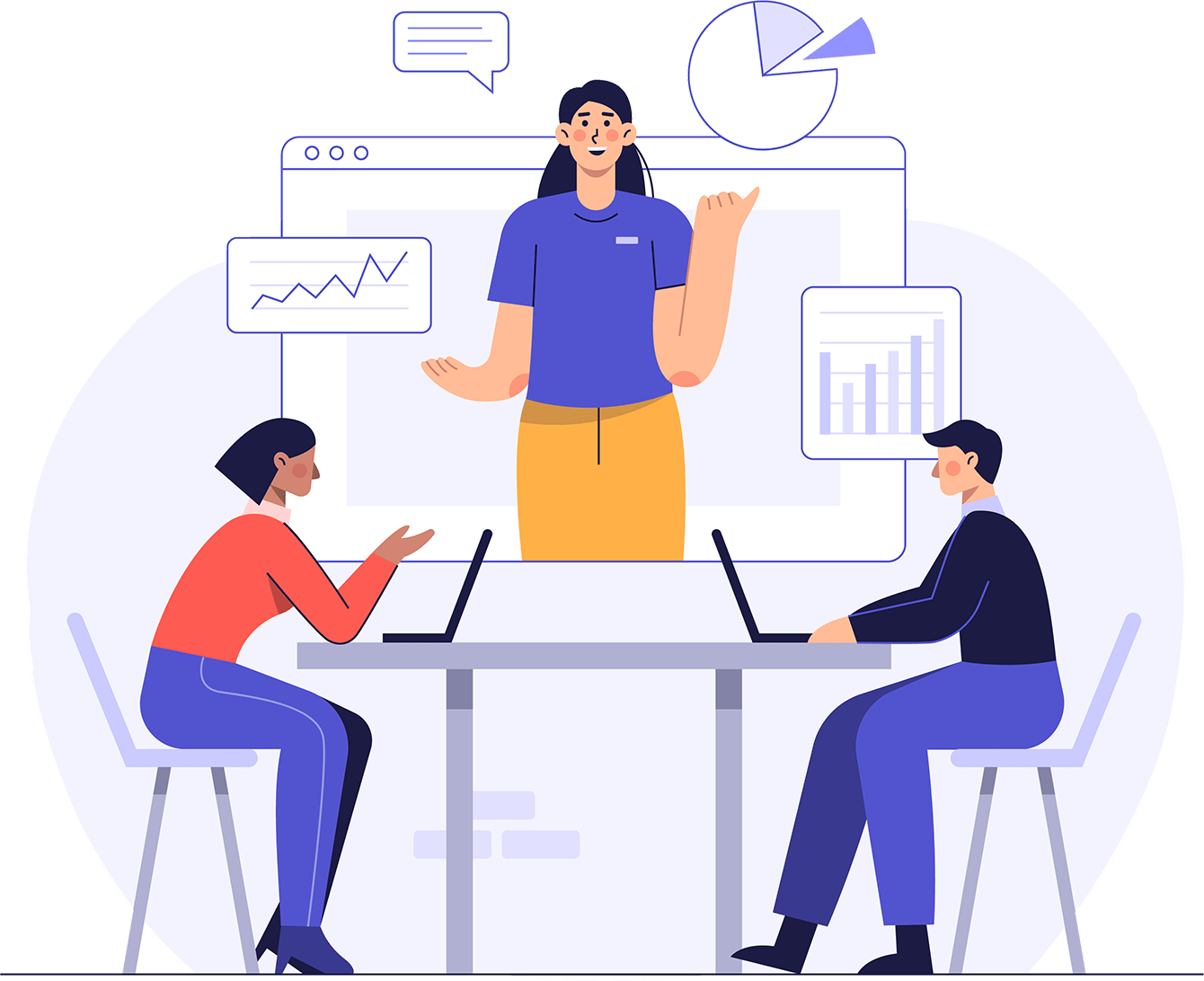“A brand is no longer what we tell the consumer it is—it is what consumers tell each other it is.” – Scott Cook, co-founder of Intuit
- 287% higher purchase rate when marketers use three or more channels in any one campaign versus those using a single-channel campaign. (Omnisend, 2020)
- 250% higher purchase frequency rate when companies use omnichannel strategies vs. single-channel (Omnisend, 2020)
- 90% higher retention rate for companies using omnichannel strategies vs. single channel
In this article, we will:
- Clarify the meaning of omnichannel retail
- Learn which social media best serves your omnichannel retail objectives!
- Explain the role of Facebook and Pinterest in the omnichannel context.
- Provide a brief overview of social media platforms and their target audiences.
What does omnichannel mean?
Omni-channel, (also spelled omnichannel), is a multichannel approach to sales that seeks to provide customers with a trouble-free, seamless shopping experience, whether customers are shopping online from a desktop, mobile device, by telephone, or in a brick-and-mortar store. (aka, omnichannel strategy)
Types of Online and Offline Channels
- Online Omnichannel retail: is the use of multiple channels to sell retail goods and services online and create a smooth customer journey. (aka, omnichannel commerce) For example, a computer company may sell its products on its website, app, Kijiji, and Amazon.
- Offline Omnichannel retail: is an offline sale channel occurs when a sale takes place without using the internet. For example, selling retail products at a physical store. Examples include phone orders, in-store shopping, or, ordering, telemarketing, etc.
- Multiple channels: Multichannel retailing uses various sales channels such as e-commerce websites, retail stores, online marketplaces, comparison shopping engines, social media platforms, and other offline and online channels
- Single-channel: refers to a retailer’s effort to sell to customers through one distribution option, regardless of whether it’s an online catalog, phone order, face-to-face selling, or a traditional in-store retail setting assisted by sales associates.
- Online and offline touchpoints: are business facets that deal with how a company interfaces with its customers. (ie, online: mobile devices, online store, or offline: purchase in-store)
Learn which social media best serves your omnichannel retail objectives!
Compare and Contrast Facebook & Pinterest Social Media Forums
The purpose of this comparison is to help demonstrate how each social media platform serves general and specific demographics and market segments. Each social media platform provides different opportunities for retailers to connect with customers. Moreover, Facebook and Pinterest are two popular platforms that serve different market target audiences.
Example: Facebook
Facebook’s mission: is to give people the power to share and make the world more open and connected.
Facebook is a website that allows users to connect with friends, family, work colleagues, or people they don’t know online. It allows users to share pictures, music, videos, articles, and their thoughts and opinions with however many people they like. Facebook is by far the largest and most accessed social media globally. (Hootsuite)
Example: Pinterest
Pinterest’s mission: is to help people discover the things they love and inspire them to do those things in their daily lives.
Pinterest is a visual discovery engine for finding ideas such as recipes, home improvement and artistic advice, and more. Pinterest “Pins” display people and boards that users can choose to follow. Users can also search for Pins via the keywords search bar. Pinterest is the 14th largest social media network globally. (Hootsuite)
Facebook versus Pinterest as Sales Channels
Facebook marketplace:
Facebook Marketplace is a platform where people can buy and sell things. For example, users can look for things to buy in their local area or find products available to ship. While individuals can list items for sale, businesses can use Facebook Marketplace (Facebook):
- Show inventory for retail items, home rentals and vehicles, and event tickets.
- Advertise items on Marketplace to reach more people, even if your business doesn’t post directly on Marketplace. (offers small brick-and-mortar stores an omnichannel retailing option)
- Display new or refurbished goods on a Facebook Page, shop on Marketplace for free, and let customers purchase without leaving Facebook (limited to eligible sellers).
- Set up a shop with your business Page and sell as a business on Marketplace. (These types of sales options have allowed many small businesses to use multiple sales channels and retain loyal customers during the pandemic)
What demographic uses Facebook Marketplace?
According to Omnicore, as of February 2022:
- Number of monthly active users: 2.91 billion
- Largest age group: 25-34 (31.5%)
- Gender: 43% female, 57% male (no data on other genders)
- 75% of online users with an income of more than $75K are on Facebook.
The most common selling items on Facebook Marketplace include:
Vehicles, property rentals, apparel, classifieds, electronics, entertainment, family, free stuff, garden & outdoor items, hobbies
Shopping & Selling on Pinterest
What started as a platform for finding new recipes and DIY ideas has become a significant shopping search engine. 89% of Americans use Pinterest to research purchasing decisions. Pinterest boasts nearly 400 million monthly active users, which is a significant number of people for one platform to shop. Users can shop using a personal account or by creating a business account on Pinterest.
What are Pinterest demographics?
According to SproutSocial, as of March 2022:
- 430 million monthly active users worldwide
- 32% of Pinterest users are aged 18-29 yrs
- 34% of Pinterest users are 30-49 yrs
- 38% of Pinterest users are 50-64 yrs
- As of January 2022, 77% are female and 15% male. (Statista)
- 45% of Pinterest users have a household income of $100,000
The top 10 Pinterest Sales categories are:
Home décor, do it yourself (DIY) and crafts, entertainment, education, art, women’s fashion, food and drinks, beauty, event planning, and gardening.
Summary: Facebook versus Pinterest
Facebook is a general social networking platform where users can stay connected with friends and find out what’s going on in their lives. Users may also update friends and family via status updates, photographs, videos, and other means. On the other hand, Pinterest is a picture and idea-sharing platform.
The majority of users on Pinterest share things that they have discovered intriguing or useful. Facebook, Pinterest, and other social platforms are geared toward serving specific target markets. So, it is important to know your customers when planning your omnichannel retail strategy.
Brief Overview of Social Media Platforms:
In planning your omnichannel retail strategy consider the following social media platforms:
Twitter.com
Twitter is a social networking service that enables users to send and read tweets. Twitter pages are designed as an instant messaging service, but they have become more news-based. As of 2013, the two top U.S.-based social media platforms used by 11% of online adults are LinkedIn and Twitter, with 10% of online adults in both markets.
LinkedIn.com
Linkedin is a business-oriented social networking site. LinkedIn provides an interface for professional people to build connections for jobs, referrals, and proposals. It also has built-in functionality for companies to create special interest groups. LinkedIn is most popular with college graduates, executives, managers, and other middle-class workers (especially from the USA).
YouTube.com
YouTube is a video-sharing website where users can upload, view, and share videos. The site was created in 2005 and is owned by Google. YouTube’s target audience is adults aged 18-49 who use the site to watch videos.
Reddit.com
Reddit is a social media website composed of numerous communities or subreddits where users submit links to content on the web and then share comments about it. Users then vote submissions up or down, which helps determine their position on the site’s pages, including hot and new posts.
Quora.com
Quora is a community-driven question-and-answer social media website with over 150 million monthly visitors worldwide. Quora’s target audience is people looking for a singular place to get the best answers to their questions as they wake up in the morning.
ResearchGate.com
ResearchGate is a European commercial social networking site for scientists and researchers to share papers, ask and answer questions, and find collaborators. ResearchGate serves over 15 million members and is a good forum for asking a wide range of questions and conducting primary research such as surveys. (University of Oklahoma)
A study conducted by The Aberdeen Group found that companies with a robust omnichannel strategy were able to retain 89% of their customers as compared to the companies that used weaker strategies retained only 33%. Omnichannel marketing, when executed correctly, can increase sales!
Omnichannel retailing is becoming an increasingly important trend in business, and if you’re not using it, you’re missing out. By integrating all sales channels into a cohesive customer experience, you can improve customer satisfaction while increasing sales and profits. So if you’re looking to stay ahead of the curve, omnichannel retailing is a solid solution.
Conclusion
Thank you for reading our article!
TimeWellScheduled.com is a fully tailored, secure, online time and attendance software that enhances your workforce management capability. TimeWellScheduled facilitates employee attendance, scheduling and associated payroll tasks through easy-to-use, automated time and attendance software. Features include everything from staffing and employee scheduling, to time clock and payroll management. Our service is free for up to 10 employees!
Free Excel Template For Employee Scheduling, click: here
Help the environment, go 100% paperless!!





